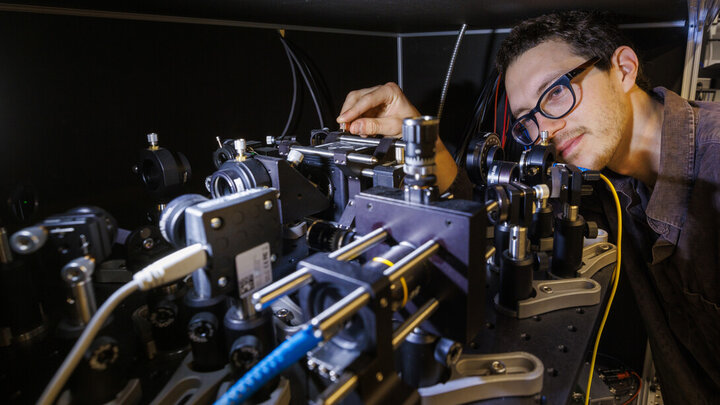University of Nebraska–Lincoln researchers have achieved a breakthrough in antiferromagnetic spintronics, a development that could expand the nanotechnology's capabilities, which have been limited by their need for excessive power. The research is summarized in Advanced Functional Materials.
The team, which includes Nebraska Engineering researchers Abdelghani Laraoui, assistant professor of mechanical and materials engineering, and Adam Erickson, doctoral student in mechanical and materials engineering, has been able to show that introducing boron — a process called B-doping — into magnetoelectric oxides can control magnetic fields at the high temperatures prevalent in electronics.
This long has been the "holy grail" of such research, said Christian Binek, Charles Bessey Professor of physics.
Laraoui devised a means to study and confirm the efficacy of the boron-doping approach — nitrogen vacancy scanning probe microscopy. With NV microscopy, researchers can directly image the boundary magnetization and see the effects of the B-doping, Laraoui said. This was demonstrated earlier in another collaborative work between Laraoui and Binek, published in 2023 at RSC Advances.
Laraoui’s unique NV imaging platform confirms the effects researchers previously could only theorize, said Binek, scientific director of the Emergent Quantum Materials and Technologies collaboration, or EQUATE, that is conducting this research. Laraoui leads the EQUATE research group focused on quantum technologies.




